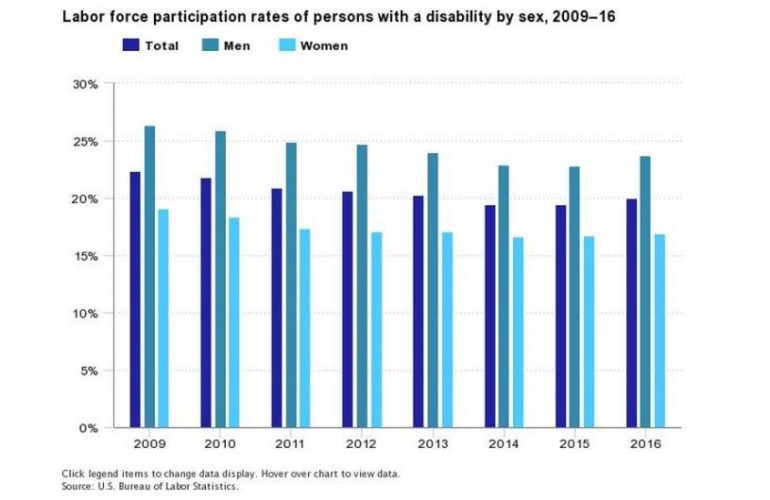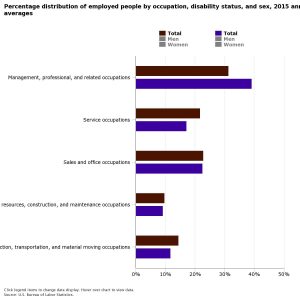 Subscribe
Subscribe- Login
-
/
Sign Up
- US Black Engineer
- >>
- News
- >>
- October is Disability Employment Awareness Month
|
Getting your Trinity Audio player ready...
|
October is National Disability Employment Awareness Month.
National Disability Employment Awareness Month raises awareness of disability employment issues. celebrates the work contributions of Americans with disabilities, and educates the public on the employment difficulties they often face.
According to the Bureau of Labor Statistics, in 2016, 20.0 percent of people with a disability participated in the labor force and 68.5 percent of people without a disability participated in the labor force.
The unemployment rate for people with a disability was 10.5 percent in 2016. The rate was little changed for the year but down from 15.0 percent in 2011.
The unemployment rate for men with a disability was 10.1 percent in 2016, similar to the unemployment rate for women with a disability (11.0 percent). The unemployment rate for people without a disability was 4.6 percent in 2016, a decline of 0.5 percentage point from 2015.
In 2015, there were about 5.2 million people with disabilities employed in the United States. The labor force participation rate for men with a disability increased from 22.8 percent in 2015 to 23.7 percent in 2016. The labor force participation rate for women with a disability, 16.9 percent in 2016, changed little over the year.
While the largest share of employed people with disabilities worked in management, professional, and related occupations (31.3 percent), employed people with disabilities were more heavily concentrated in service occupations and in production, transportation, and material moving occupations than their counterparts with no disabilities.
Almost 60% of people with a disability age 25 and older had a high school education or less in 2013
Each October, National Disability Employment Awareness Month raises awareness of disability employment issues. In 1945, Congress declared the first week in October “National Employ the Physically Handicapped Week.”
In 1962, the word “physically” was removed to acknowledge all disabilities. In 1988, the observance was expanded to a month and name changed to what it is today.
NOTE: A person with a disability has at least one of the following conditions: is deaf or has serious difficulty hearing; is blind or has serious difficulty seeing even when wearing glasses; has serious difficulty concentrating, remembering, or making decisions because of a physical, mental, or emotional condition; has serious difficulty walking or climbing stairs; has difficulty dressing or bathing; or has difficulty doing errands alone such as visiting a doctor’s office or shopping because of a physical, mental, or emotional condition.
Sources: The Economics Daily, Bureau of Labor Statistics


 October is National Disability Employment Awareness Month.
October is National Disability Employment Awareness Month.